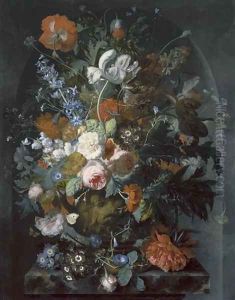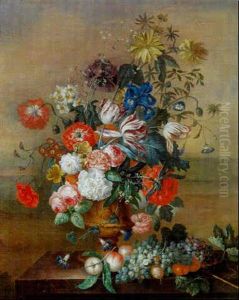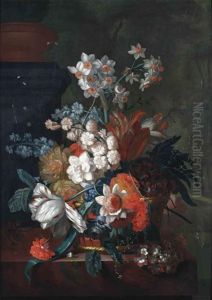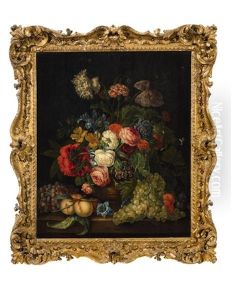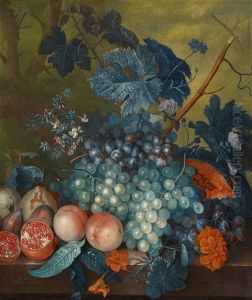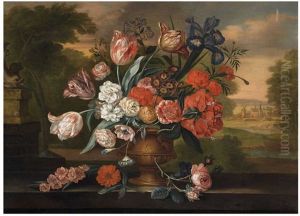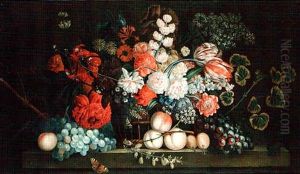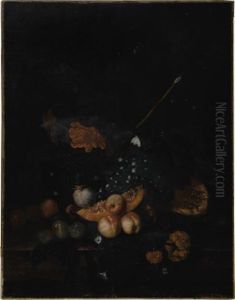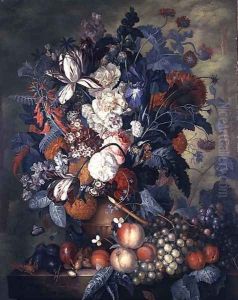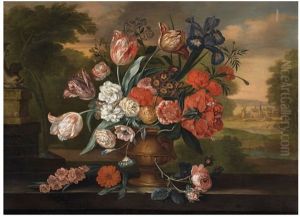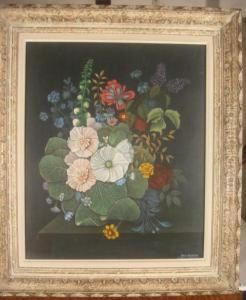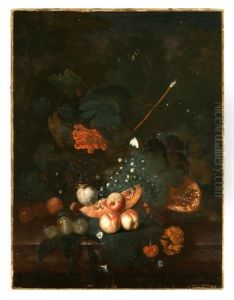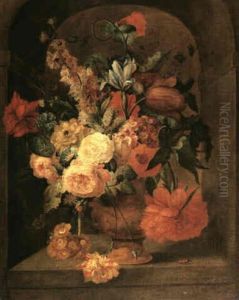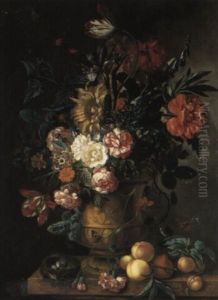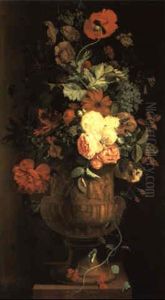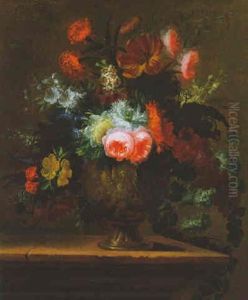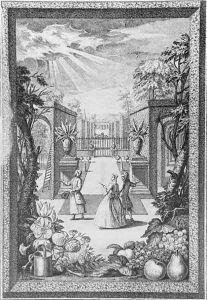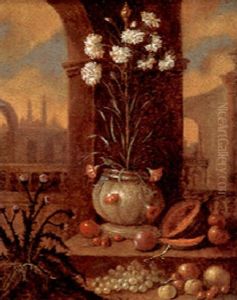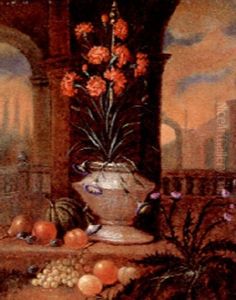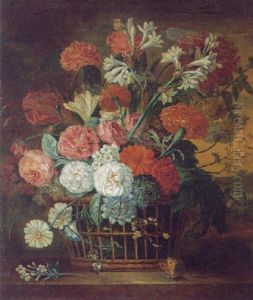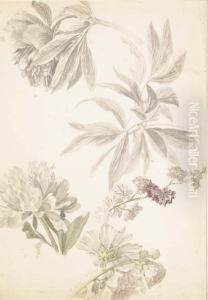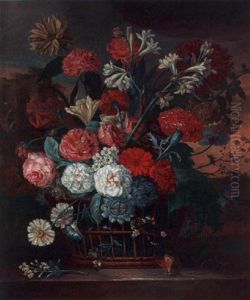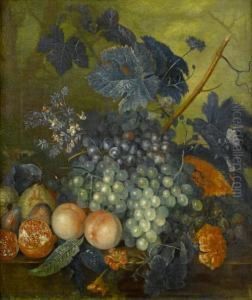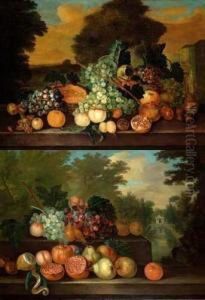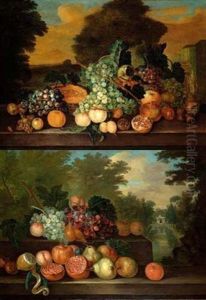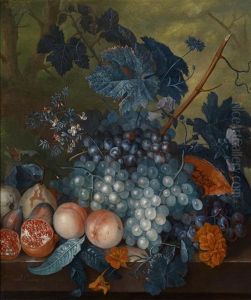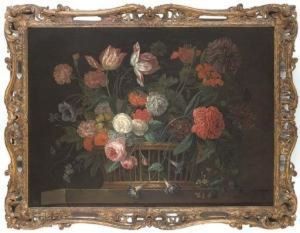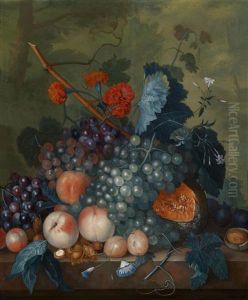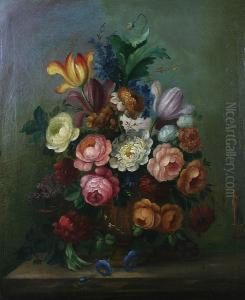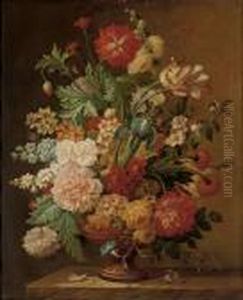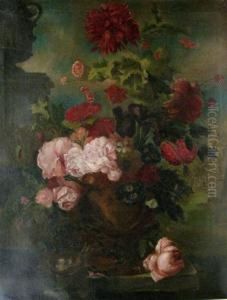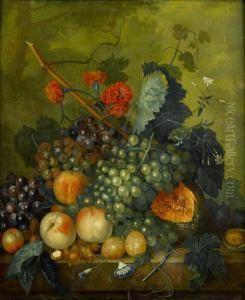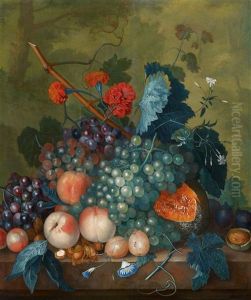Jacob van Huysum Paintings
Jacob van Huysum, born in Amsterdam in 1687, was a distinguished Dutch painter known for his intricate and vibrant flower pieces and landscapes. He hailed from a family of notable artists; his father, Justus van Huysum, also a painter, was a significant influence on Jacob's early artistic development. Despite the prominence of his younger brother, Jan van Huysum, who is often more widely recognized for his contributions to the genre of still life and floral painting, Jacob carved out his own artistic path and developed a style that was both unique and reflective of the Huysum family's artistic legacy.
Jacob's career blossomed in the early 18th century, a period that saw a flourishing of interest in botanical and floral subjects among art collectors and the general public in the Netherlands. His works, characterized by meticulous attention to detail and a vibrant palette, captured the beauty and intricacy of nature. Unlike his brother Jan, who meticulously labored over his compositions in the studio, Jacob was also known to paint landscapes, capturing the Dutch countryside with a lively and naturalistic touch.
Throughout his career, Jacob van Huysum enjoyed the patronage of various European aristocrats and art collectors. His ability to infuse life into his floral arrangements and landscapes made his paintings highly sought after, not just in the Netherlands but across Europe. Despite this, detailed records of his life and work are less comprehensive than those of his brother Jan, leading to a quieter legacy.
Jacob van Huysum's contributions to Dutch art, particularly in the realm of flower painting and landscape art, were significant during his lifetime. His work reflects the broader trends in Dutch art of the time, which celebrated the beauty of the natural world and sought to capture its ephemeral qualities through art. He passed away in 1740, leaving behind a body of work that continues to be appreciated for its beauty and technical skill. His paintings are preserved in various museums and collections worldwide, where they stand as a testament to the enduring appeal of Dutch floral and landscape painting.
